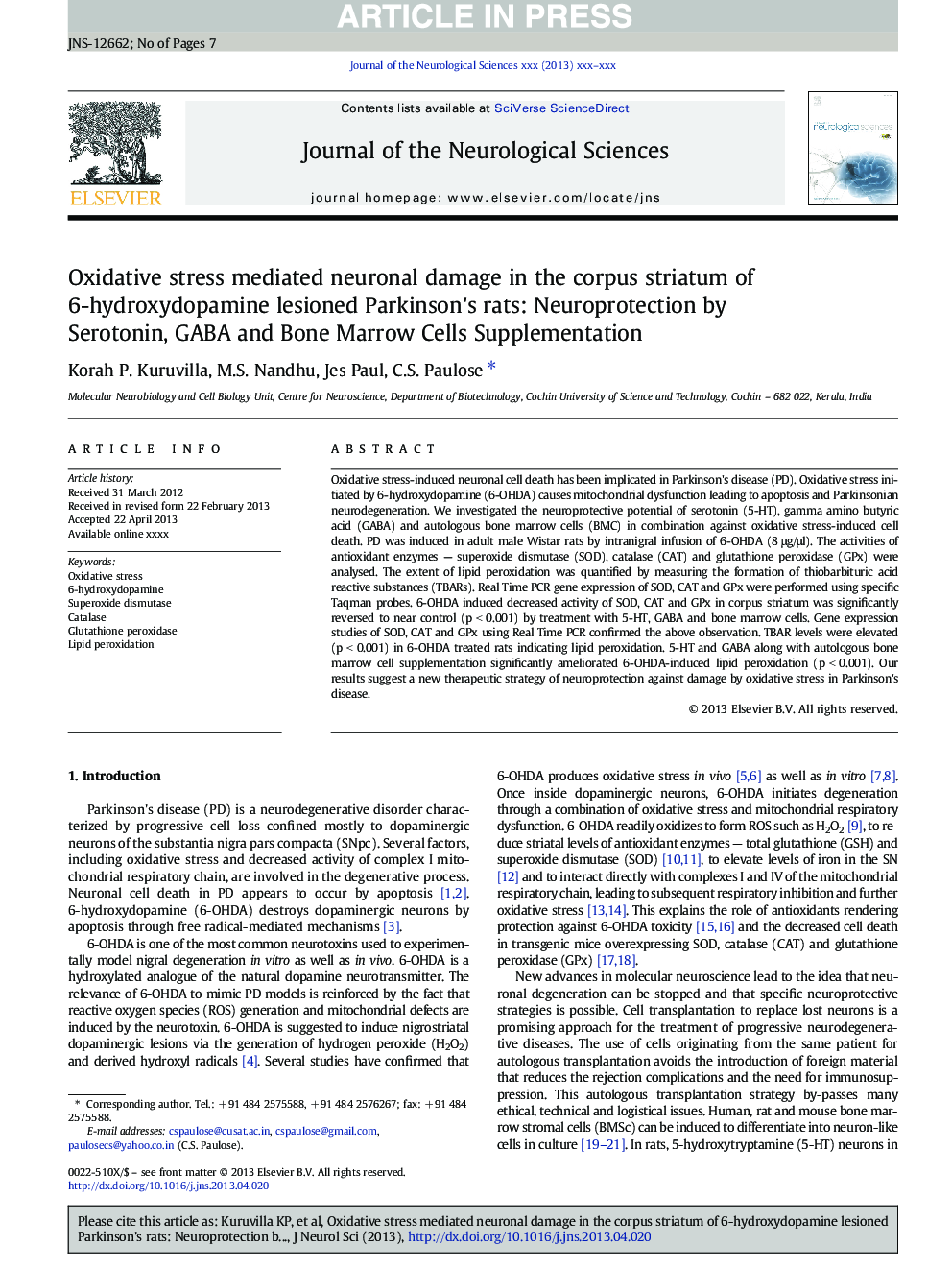| Article ID | Journal | Published Year | Pages | File Type |
|---|---|---|---|---|
| 8279495 | Journal of the Neurological Sciences | 2013 | 7 Pages |
Abstract
Oxidative stress-induced neuronal cell death has been implicated in Parkinson's disease (PD). Oxidative stress initiated by 6-hydroxydopamine (6-OHDA) causes mitochondrial dysfunction leading to apoptosis and Parkinsonian neurodegeneration. We investigated the neuroprotective potential of serotonin (5-HT), gamma amino butyric acid (GABA) and autologous bone marrow cells (BMC) in combination against oxidative stress-induced cell death. PD was induced in adult male Wistar rats by intranigral infusion of 6-OHDA (8 μg/μl). The activities of antioxidant enzymes - superoxide dismutase (SOD), catalase (CAT) and glutathione peroxidase (GPx) were analysed. The extent of lipid peroxidation was quantified by measuring the formation of thiobarbituric acid reactive substances (TBARs). Real Time PCR gene expression of SOD, CAT and GPx were performed using specific Taqman probes. 6-OHDA induced decreased activity of SOD, CAT and GPx in corpus striatum was significantly reversed to near control (p < 0.001) by treatment with 5-HT, GABA and bone marrow cells. Gene expression studies of SOD, CAT and GPx using Real Time PCR confirmed the above observation. TBAR levels were elevated (p < 0.001) in 6-OHDA treated rats indicating lipid peroxidation. 5-HT and GABA along with autologous bone marrow cell supplementation significantly ameliorated 6-OHDA-induced lipid peroxidation (p < 0.001). Our results suggest a new therapeutic strategy of neuroprotection against damage by oxidative stress in Parkinson's disease.
Keywords
Related Topics
Life Sciences
Biochemistry, Genetics and Molecular Biology
Ageing
Authors
Korah P. Kuruvilla, M.S. Nandhu, Jes Paul, C.S. Paulose,
